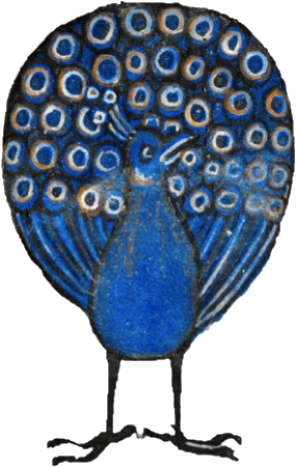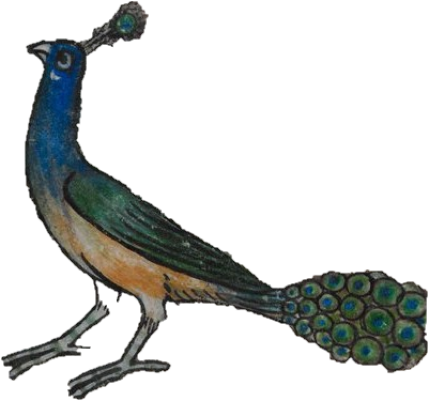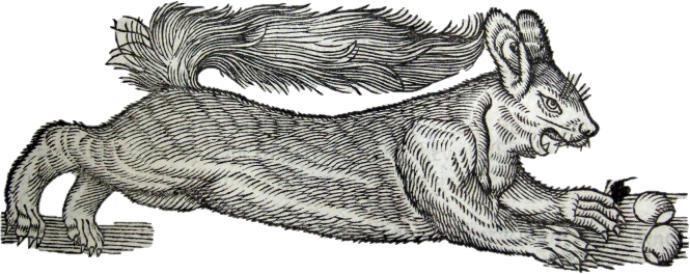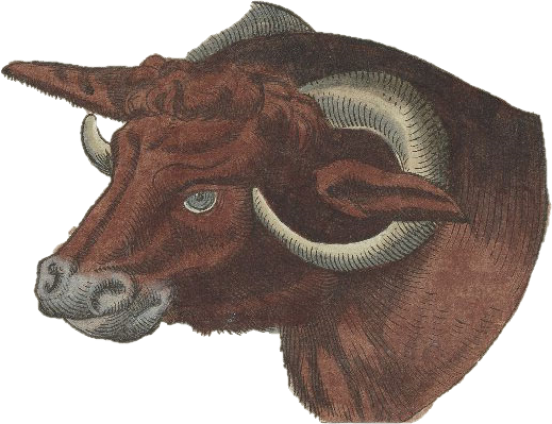Posted by Krista J. Kesselring, 22 April 2020.
Can you steal a peacock? Jurists once debated this question and, for a time at least, said ‘no’. As animals meant for pleasure rather than for profit, peacocks were not ‘larcenable’.
 Our treatment of animals today is generally premised on seeing them only in relation to ourselves, rather than as entities with lives and rights of their own. Much the same can be said of animals’ appearances in early modern laws, though with a few unexpected twists that throw some of our own ideas into contrast and that do show some change over time. For Earth Day this year—billed as the 50th anniversary of the ‘birth of the modern environmental movement’—here are a few short snippets on appearances of non-human animals in early modern law that seemed (to me, at least) surprising or significant.
Our treatment of animals today is generally premised on seeing them only in relation to ourselves, rather than as entities with lives and rights of their own. Much the same can be said of animals’ appearances in early modern laws, though with a few unexpected twists that throw some of our own ideas into contrast and that do show some change over time. For Earth Day this year—billed as the 50th anniversary of the ‘birth of the modern environmental movement’—here are a few short snippets on appearances of non-human animals in early modern law that seemed (to me, at least) surprising or significant.
One was this notion that certain animals just couldn’t be stolen. Yes, one could certainly abscond with an animal someone else claimed as their own, but courts in late medieval England might not treat that act as larceny. J.H. Baker has a fascinating section on this subject in his volume in the Oxford History of the Laws of England, noting that the distinction between ‘things of pleasure and things of profit was a favourite topic of jurisprudential reflection in early Tudor times’.  Larceny was the ‘unlawful taking away’ of someone’s personal property, but not all taking away was unlawful. Some things—things of pleasure rather than profit—could not be unlawfully taken. They were not property, as such. One could be punished for taking fish and pigeons or sheep and cows that belonged to someone else as they were ‘profitable’. But property—the legally enforceable right to exclude others from possession—did not fully subsist in animals kept only for sport or pleasure. The legal distinction between wild animals and tame might be somewhat more familiar to readers, with the notion enduring into the present that animals ‘ferae naturae’—creatures of a wild nature—are subject to only a qualified, not absolute ownership. But the notion that animals kept only for pleasure might not be stolen died out in the sixteenth century. An Act of parliament passed in 1539 signals the shift: in making it a capital offence to steal the king’s hawks or their eggs, the Act insisted that a man ought to be able to assert his rights ‘as well in things of high pleasure as in things commonly valuable…and in especial of and in things of pleasure’. In arguments that have their echoes today, some people started to say that pleasure—that the comfort and good health that came from, for example, hearing a caged bird sing—was itself profitable. Judges had applied the pleasure vs profit distinction even to objects such as musical instruments and tried to do the same with diamonds, things deemed to be of no intrinsic value beyond the pleasure they brought. Baker suggests that the argument that diamonds could not be stolen, made in 1553, was ‘testing the old doctrine to destruction’. As he notes, the earlier distinction served to mitigate the rigour of the law, which then held that thefts of property of even fairly small value could be punished with death. But the distinction also suggests ways of thinking about animals and property that differ from those that prevail today.[1] As such, it might allow a somewhat more hopeful view than the assertions one sees in texts on animal law that often bewail a static, monolithic human approach to property in animals that has supposedly existed from time out of mind. As Sara Butler suggested in a previous post, perhaps earlier views were more varied and variable than is sometimes now assumed.
Larceny was the ‘unlawful taking away’ of someone’s personal property, but not all taking away was unlawful. Some things—things of pleasure rather than profit—could not be unlawfully taken. They were not property, as such. One could be punished for taking fish and pigeons or sheep and cows that belonged to someone else as they were ‘profitable’. But property—the legally enforceable right to exclude others from possession—did not fully subsist in animals kept only for sport or pleasure. The legal distinction between wild animals and tame might be somewhat more familiar to readers, with the notion enduring into the present that animals ‘ferae naturae’—creatures of a wild nature—are subject to only a qualified, not absolute ownership. But the notion that animals kept only for pleasure might not be stolen died out in the sixteenth century. An Act of parliament passed in 1539 signals the shift: in making it a capital offence to steal the king’s hawks or their eggs, the Act insisted that a man ought to be able to assert his rights ‘as well in things of high pleasure as in things commonly valuable…and in especial of and in things of pleasure’. In arguments that have their echoes today, some people started to say that pleasure—that the comfort and good health that came from, for example, hearing a caged bird sing—was itself profitable. Judges had applied the pleasure vs profit distinction even to objects such as musical instruments and tried to do the same with diamonds, things deemed to be of no intrinsic value beyond the pleasure they brought. Baker suggests that the argument that diamonds could not be stolen, made in 1553, was ‘testing the old doctrine to destruction’. As he notes, the earlier distinction served to mitigate the rigour of the law, which then held that thefts of property of even fairly small value could be punished with death. But the distinction also suggests ways of thinking about animals and property that differ from those that prevail today.[1] As such, it might allow a somewhat more hopeful view than the assertions one sees in texts on animal law that often bewail a static, monolithic human approach to property in animals that has supposedly existed from time out of mind. As Sara Butler suggested in a previous post, perhaps earlier views were more varied and variable than is sometimes now assumed.

But then, some animals were thought to offer people neither pleasure nor profit and indeed to be actively harmful: here one encounters the so-called ‘Vermin Acts’ of the sixteenth century. Laws passed in the reigns of Henry VIII and Elizabeth I, in 1532 and 1566, identified a long list of bird and mammal species as ‘vermin’ to be exterminated on sight and put bounties upon their heads. Intended to protect crops in years of soaring population growth, the Acts organized the killing of some animals and enlisted the poor to help out, with payments to be made to anyone who brought their churchwardens evidence of the creatures they had killed. One might get 4 pence for the head of a hedgehog, or 12 pence for that of a fox or a badger, for example. Those of us who study or teach early modern English history are used to thinking about the long-lasting significance of various sixteenth-century statutes—the Acts that created the Church of England, that established a poor law system, or that set out the parameters of master-servant relationships in ways that endured until the nineteenth century, for example. As Roger Lovegrove’s Silent Fields: The Long Decline of a Nation’s Wildlife establishes in brutal detail, these lesser-known Vermin Acts had a long-lasting significance of their own. Lovegrove acknowledges that changes in land use in and after the Industrial Revolution—clearance of woodlands, large-scale monoculture, urban development, air pollution, etc.—and the development of vast ‘sporting estates’ after parliamentary enclosures have had far greater effects in killing off English wildlife, but he convincingly argues for the earlier roots of the problem in the sixteenth-century Vermin Acts. Some animal species disappeared from England not by accident but as ‘the result of determined campaigns to remove them entirely’. [2]

Quite aside from the animals destroyed as ‘vermin’, many others died precisely because they were of use to humans, whether to provide skins, furs or food; but, strikingly, at least some people exhibited some qualms about all this killing. Those qualms had one odd manifestation relevant to early modern law: the insistence that butchers ought not to be jurors in matters of life and death and, indeed, what seems to be the entirely mistaken belief that the law already barred them from serving as jurors in capital cases. Erica Fudge brings this belief to light in her fascinating book, Perceiving Animals: Humans and Beasts in Early Modern English Culture. She cites minister John Rawlinson’s 1612 sermon, published under the title Mercy to a Beast, which adduced as evidence of the brutalizing effects of cruelty to animals that ‘prudent caution of our law givers that butchers (men acquainted with shedding the blood of beasts) should not be admitted for  jurors in cases of life and death: it being a strong and violent presumption that he that hath no pity upon the life of beasts will not have so much as he ought to have upon the life of men’. The famous chemist Robert Boyle would report much the same in a letter from the late 1640s: ‘our English laws do wisely exclude butchers from being jury men upon life and death, as supposing their profession but an apprenticeship of cruelty’. In 1655, the vegetarian radical Roger Crab deflected some of the blame on to those who provided a market for the meat: if those who kill the animals are deemed incapable of serving on juries, he wrote, what can we say of those who buy the meat with their money? Just as the receiver is worse than the thief, so ‘the buyer is worse than the butcher’. Other writers repeated this mistaken notion that butchers couldn’t be jurors in matters of life and death—John Dryden, John Locke, Jonathan Swift, etc. According to Bernard Mandeville, it was something ‘everybody knows’. Only in the nineteenth century, it seems, did some people question in print the notion that butchers’ profession disposed them to murderous impulses or unusual cruelty. Of course, part of the argument then was simply that others were no better: what of the coachman or gentleman driver who lashes his horses? What of the fishmonger who cuts up creatures live? And so on. The belief that the law barred butchers from serving on juries of life and death seems to have been a mistake, but an interesting one, suggesting as it does some perception of a degree of relatedness and common cause between people and their non-human animal kin.[3]
jurors in cases of life and death: it being a strong and violent presumption that he that hath no pity upon the life of beasts will not have so much as he ought to have upon the life of men’. The famous chemist Robert Boyle would report much the same in a letter from the late 1640s: ‘our English laws do wisely exclude butchers from being jury men upon life and death, as supposing their profession but an apprenticeship of cruelty’. In 1655, the vegetarian radical Roger Crab deflected some of the blame on to those who provided a market for the meat: if those who kill the animals are deemed incapable of serving on juries, he wrote, what can we say of those who buy the meat with their money? Just as the receiver is worse than the thief, so ‘the buyer is worse than the butcher’. Other writers repeated this mistaken notion that butchers couldn’t be jurors in matters of life and death—John Dryden, John Locke, Jonathan Swift, etc. According to Bernard Mandeville, it was something ‘everybody knows’. Only in the nineteenth century, it seems, did some people question in print the notion that butchers’ profession disposed them to murderous impulses or unusual cruelty. Of course, part of the argument then was simply that others were no better: what of the coachman or gentleman driver who lashes his horses? What of the fishmonger who cuts up creatures live? And so on. The belief that the law barred butchers from serving on juries of life and death seems to have been a mistake, but an interesting one, suggesting as it does some perception of a degree of relatedness and common cause between people and their non-human animal kin.[3]
 None of this might seem all that hopeful a message on this Earth Day in any sense more robust than simply showing the possibility of change over time. But the first and the final stories might also prompt us to reflect that capital punishment—and indeed public executions—for a very long time seemed obvious, necessary, and simply ineradicable. One might add a dose of mitigation by not prosecuting some offences as theft or by keeping supposedly brutalized butchers off juries, but one was certainly not about to get rid of the death penalty. Yet the death penalty is gone from much of the world today. It’s just imaginable, then, that we might in time find other, better ways to live with the natural world around us.
None of this might seem all that hopeful a message on this Earth Day in any sense more robust than simply showing the possibility of change over time. But the first and the final stories might also prompt us to reflect that capital punishment—and indeed public executions—for a very long time seemed obvious, necessary, and simply ineradicable. One might add a dose of mitigation by not prosecuting some offences as theft or by keeping supposedly brutalized butchers off juries, but one was certainly not about to get rid of the death penalty. Yet the death penalty is gone from much of the world today. It’s just imaginable, then, that we might in time find other, better ways to live with the natural world around us.
Images:
The peacocks come from the Masstricht Book of Hours (14th century), British Library, Stowe MS 17, fols. 17r and 255r.
The other images are from Edward Topsell, The History of Four-Footed Beasts and Serpents (London, 1658). [And here for the Folger Shakespeare Library’s beautifully coloured copy.]
Notes:
[1] Sir John Baker, Oxford History of the Laws of England, vol. 6: 1483-1558 (Oxford, 2003), pp. 33, 564. The Act on hawks: 31 Henry VIII, c. 12 (1539).
[2] Roger Lovegrove, Silent Fields: The Long Decline of a Nation’s Wildlife (Oxford, 2007). For the key acts to which he refers, see 24 Henry VIII, c. 10 (1532), properly An Act made and ordained to destroy Choughs, Crows and Rooks, and 8 Elizabeth I, c. 15, An Act for Preservation of Grain (1566).
[3] Erica Fudge, Perceiving Animals: Humans and Beasts in Early Modern English Culture (Basingstoke, 2000), chapter 5. Nathan Ballantyne also tracks down references to this belief: Knowing Our Limits (Oxford, 2019), pp. 134ff.
[…] “Can you steal a peacock? Jurists once debated this question and, for a time at least, said ‘no’. As animals meant for pleasure rather than for profit, peacocks were not ‘larcenable’. Our treatment of animals today is generally premised on seeing them only in relation to ourselves, rather than as entities with lives and rights of their own. Much the same can be said of animals’ appearances in early modern laws, though with a few unexpected twists that throw some of our own ideas into contrast and that do show some change over time …” (more) […]
LikeLike
[…] blog has recently featured a fascinating post on whether it is possible to steal a peacock. In this post, I’m going to look at the laws […]
LikeLike
[…] 3. Can You Steal a Peacock? Animals in Early Modern Law […]
LikeLike
Thank you for shaaring this
LikeLiked by 1 person